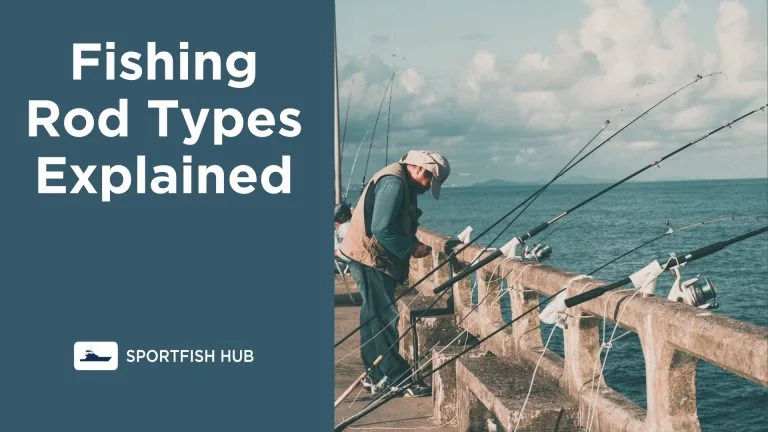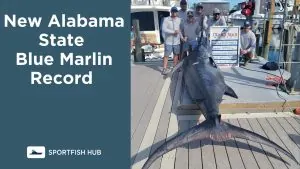Fishing rods come in many different types, each suited for specific fishing needs. Selecting the right rod ensures an optimal fishing experience. This guide will explain the main types of fishing rods, key factors in choosing a rod, and tips for beginners.
Different Types Of Fishing Rods
Spinning Rods
Spinning rods are the most common and versatile type of fishing rod. The reel hangs beneath the rod, providing stability and power. Spinning rods work for all kinds of species and conditions. They come in many lengths, powers, and actions to match your needs.
Baitcasting Rods
Baitcasting rods hold a reel that sits atop the rod. They allow longer, more accurate casts and can handle heavier lines and lures. Baitcasting rods excel for bass fishing and heavy cover. They require more skill than spinning rods.
Fly Fishing Rods
Fly rods are long, lightweight rods designed for fly fishing. Anglers use fly rods to delicately cast artificial flies attached to heavy fly line. Fly rods come in different weights to match the size of fish targeted.
Surf Rods
Surf rods have an extra-long design to cast far distances into the ocean. They can withstand saltwater and handle heavy rigs needed to hold bottom in rough water. Surf rods give added leverage for fighting large fish.
Ice Fishing Rods
Ice fishing rods are short, durable rods made for fishing vertically through holes in the ice. Their compact size is ideal for ice shelters. Light power ice rods work well for panfish while medium power rods handle larger species.
Telescoping Rods
Telescoping rods collapse down for easy transport and storage. They extend to full length for fishing. The compact size makes them great for hiking, kayaking, or limited space. Most handle light to medium freshwater species.
Key Factors in Choosing a Fishing Rod
Length
Rod length affects casting distance. Longer rods cast farther but are harder to control. Shorter rods provide more power. A 7-9 ft rod is a good all-around size for beginners. Match the length to your fishing environment.
Power
Power indicates the rod’s strength. Ultra-light rods are for small fish. Heavy power rods are for large fish that require more resistance. Match the power to the weight of fish you are targeting.
Action
Action is how far down the rod blank the bend occurs. Fast action rods only flex at the tip while slow action rods bend deeper into the blank. Moderate or medium actions are versatile for beginners.
Rod Hand Orientation
Decide between a right or left-handed fishing reel. Right-handed anglers should use a rod with the reel seat on the right side of the handle. Left-handed anglers need the reel position on the left side.
Matching rod hand orientation avoids awkward hand switching and tangles during casting, reeling, and fighting fish. While you can learn to cast opposite your dominant hand, starting with a matched rod makes learning easier.
Fishing Rod Power and Action Chart
| Power | Action | Best Suited For |
|---|---|---|
| Ultra Light | Slow to Moderate | Panfish, light tackle |
| Light | Moderate Fast | Trout, finesse baits |
| Medium | Moderate Fast | Bass, all-around use |
| Medium Heavy | Moderate Fast | Pike, jigs, cover |
| Heavy | Fast | Catfish, salmon, saltwater |
Material
Common rod materials include fiberglass (flexible), graphite (sensitive but brittle), and composite blends. Graphite is good for finesse fishing while fiberglass handles heavier use.
Purpose
Consider the species you are targeting and techniques you will use. Choose the rod type suited for your purposes, whether bass fishing, fly fishing, surf fishing, or another application.
Tips for Beginners
- Start with a medium or moderate fast action 6-7ft spinning rod combo for versatility.
- Match the rod power to the weight of lures and fish you expect to catch. Light for smaller fish and panfish. Medium or medium-heavy for average-sized fish. Heavy for large fish.
- Look for guides with stainless steel frames or ceramic inserts to prevent corrosion, especially in saltwater.
- Quality rods from reputable brands ensure performance and durability. Popular options include Shimano, Daiwa, Penn, and Abu Garcia.
- Learn proper rod care including rinsing after saltwater use, checking for nicks in guides, and avoiding point pressure during storage.
- Invest in a rod case or tube for safe transport and to protect rod blanks from accidental damage.
- Go to a physical tackle shop when possible and test rods for comfort in your hand, balance, and responsiveness.
In summary, identify the species you want to target and techniques you will use, then select a fishing rod matched for your specific needs and fishing environment. With a properly matched rod, you can look forward to maximizing your time on the water.
Choosing Rod Types By Length
Fishing rod length is a key factor that affects casting distance and fishing control. Follow these tips on choosing the right length fishing rod for your needs:
Recommended Fishing Rod Lengths By Species
| Fish Species | Rod Length |
|---|---|
| Panfish | 4-5 feet |
| Trout | 5-6 feet |
| Bass | 6-7 feet |
| Salmon | 8-10 feet |
| Surf Fishing | 10-14 feet |
Typical Fishing Rod Lengths
- Ultralight rods for panfish: 4-5 feet
- Light rods for trout: 5-6 feet
- Medium rods for bass, walleye: 6-7 feet
- Surf rods for ocean fishing: 10-14 feet
Match The Length To Your Fishing Location
- Shorter rods for brushy areas, boat fishing, kids
- Longer rods for open water, surf, fly fishing
Rod Length Affects Casting Distance
- Longer rods cast farther but are harder to control
- Shorter rods provide more power but reduced casting distance
Recommended Rod Lengths By Skill Level
- Kids & beginners: 5-7 feet
- Intermediate: 6-8 feet
- Advanced: 7-9+ feet
An 7-8 foot medium power rod is a versatile starting point for most beginner anglers. Adjust length based on your fishing environment and species targeted.
Key Things To Know About Fishing Rod Actions
Understanding fishing rod action helps anglers choose the right rod for their needs. Here are the key things to know:
Fishing Rod Action Explained
- Refers to where the rod blank bends when loaded
- Indicates how fast the rod returns to neutral position
The 3 Main Rod Actions
Fast Action
- Rod flexes only near the tip
- Ideal for working lures and hooksets
- Not much cushion for fighting fish
Moderate Action
- Rod flexes lower into blank
- Balance of sensitivity and fish fighting
- Versatile for many techniques
Slow Action
- Rod flexes deep into butt section
- Absorbs head shakes when fighting fish
- Not ideal for lure fishing
Match The Action To Your Fishing
- Fast for casting, twitching baits
- Moderate for an all-around rod
- Slow for live bait fishing
- Lighter action for smaller lures and fish
- Heavier action for jigs and large fish
Our Final Thoughts
Choosing the proper action maximizes lure control, fish fighting, and angling enjoyment. Test different rod actions to see what suits your fishing style and target species.












